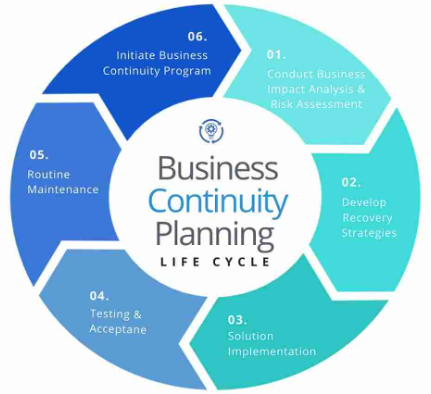
In today’s unpredictable world, having a Business Continuity Plan (BCP) is crucial for ensuring your organization can continue operating during and after disruptions. From natural disasters to cyberattacks, a solid BCP helps you prepare for the unexpected, minimizing downtime and financial loss. Here’s a step-by-step guide to creating a comprehensive BCP.
What Is a Business Continuity Plan?
A BCP outlines procedures and instructions an organization must follow in the face of disruption. It covers key business processes, assets, human resources, and partners to ensure critical functions remain operational or are quickly restored.
Step-by-Step Guide to Creating a BCP
1. Conduct a Business Impact Analysis (BIA)
A BIA helps you identify the critical functions and processes within your organization, evaluating their potential impact during a disruption. This analysis should answer:
- Which operations are essential?
- How much downtime can be tolerated?
- What resources are required to restore these functions?
2. Identify Risks and Threats
Understand potential risks that could disrupt operations, such as:
- Natural disasters (floods, earthquakes)
- Cybersecurity threats (data breaches, ransomware)
- Power outages or utility failures
- Supply chain disruptions
By categorizing risks, you can prioritize planning efforts.
3. Develop Recovery Strategies
Recovery strategies ensure that critical functions continue or resume quickly. Common strategies include:
- Alternative Work Locations: Remote work or secondary office sites.
- Backup Systems: Offsite data backups and redundant IT systems.
- Third-party Support: Agreements with vendors for emergency services or supplies.
4. Create the Plan
Your BCP should include:
- Contact Information: A list of internal and external stakeholders, including employees, vendors, and emergency contacts.
- Roles and Responsibilities: Define who is responsible for executing specific parts of the plan.
- Emergency Response Procedures: Steps for immediate response, such as evacuation or IT recovery.
- Communication Plan: Templates and protocols for notifying stakeholders during a crisis.
- Testing and Maintenance Schedule: Regular reviews and updates to ensure the plan remains effective and relevant.
5. Train Your Team
Conduct regular training sessions so employees understand their roles during a disruption. Simulation exercises can be highly effective in identifying gaps and improving preparedness.
6. Test and Update the Plan
Testing your BCP through drills and scenarios helps you assess its effectiveness. Based on the results, update the plan to address any weaknesses or changes in your business operations.
Key Benefits of a BCP
- Minimized Downtime: Ensures critical operations remain active or recover quickly.
- Reduced Financial Impact: Prevents costly interruptions or data losses.
- Enhanced Reputation: Demonstrates reliability and preparedness to clients and stakeholders.
- Compliance: Meets industry standards and regulatory requirements for risk management.
Final Thoughts
Writing a Business Continuity Plan might seem daunting, but it’s an investment in your organization’s resilience. By taking the time to create, test, and maintain a BCP, you ensure that your business can withstand challenges and emerge stronger.
If you need help crafting a BCP or advice on IT systems for business continuity, feel free to reach out. Together, we can prepare your business for a secure future.
Comments are closed